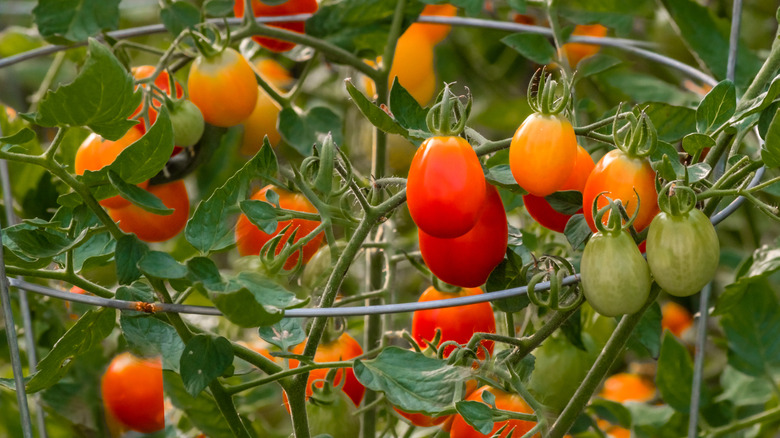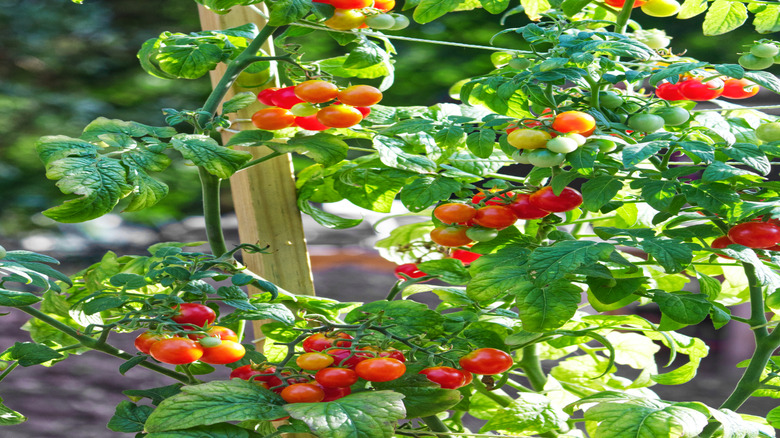The Little-Known Downsides To Using Tomato Cages To Support Your Plants
Tomato plants (Solanum lycopersicum) may start as tiny, well-behaved seedlings, but it doesn't take long for them to produce a multitude of disorderly vines — not to mention the dozens of pounds of fruits a single plant can bear. While the most commonly used supports for these plants are great for growing compact, patio-type tomatoes, there are a few downsides of tomato cages that gardeners should keep in mind, including the increased risk of fungal diseases.
Since cages keep plant foliage densely packed together, there's simply not much air circulation around the leaves. In these humid conditions, fungal diseases can proliferate. The cages are also difficult to clean, making it far too easy to pass along disease-causing organisms to future crops since these supports are used year after year.
But disease isn't the only downside to using tomato cages. They usually aren't tall or sturdy enough for vigorous varieties, so the weight of a fruit-laden tomato plant can easily distort the cage, making it harder to reuse. Another downside of tomato cages is that fruit is often hidden inside the cone-shaped cage, out of view, making it difficult to harvest the crop. Because of these disadvantages, many gardeners are choosing to repurpose their old tomato cages for other uses and are instead opting for alternate methods of training their 'Cherokee Purple' or 'Brandywine' tomato plants.
Alternatives to using tomato cages
Allowing tomato vines to sprawl on the ground untrained comes with its own problems, such as fruit rotting as it comes into contact with garden soil, so the best alternatives to using tomato cages for support include various types of staking and trellising. These members of the nightshade family can be staked by tying the plant's central vine to a single stake or to two double stakes pounded in on either side of a plant. You can also trellis tomato plants using just string or use rebar to make a permanent trellis.
Another option is the Florida weave, TikTok's trellis-weaving technique that could help you tomatoes flourish. With the Florida weave, stakes are pounded in every other plant or so, and then string is woven or looped around the plants and attached to the stakes as support. Staking and weaving is a method that results in less disease, while making fruit easier to harvest. Whichever support method gardeners use as a replacement for tomato cages, properly pruning tomato plants helps to lower the risk of disease and increase the bounty from these delicious summer plants.
If you still want to use tomato cages, choose a larger, open-style cage that fits your tomato plant and is made of sturdy materials. You'll have better luck using cages with smaller varieties. As the tomato grows, guide the branches out through the side openings to prevent them from being crammed upward inside the cage. It also helps to prune the lower leaves and suckers to allow better airflow. Leave ample space between each caged tomato plant for additional circulation.

